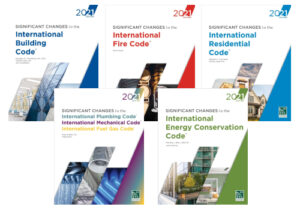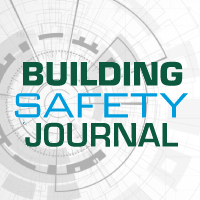
Significant changes to secondary attachments and fireproofing in the 2021 International Building Code
A modification to Section 704.6.1 (Secondary Attachments and Fireproofing) of the 2021 International Building Code states that guidance has been provided to ensure continuity of fire-resistive protection where secondary steel attaches to either primary or secondary fire-resistance-rated structural members.
Structural frame members such as columns, beams and girders are typically regulated for fire resistance based on a building’s type of construction. While Section 704.6 addressed protection for certain items that may be attached to a structural member, there was not enough detail to determine how the provisions would be applied to other elements. In many buildings, various items that do not require a fire-resistance rating end up being attached to structural elements that require protection. Examples of non-rated elements include lateral bracing elements for wind or seismic loads, or steel angles or tubes that are used to support an exterior curtainwall system. Where these nonrated and rated elements connect, the code has not clearly identified how much of the attached element needs to be protected. Where steel attachments connect to the structural system, heat transfer from the unprotected element into the structure can occur and compromise the fire-resistance rating of the member or assembly. Under this new provision, an attached steel element must be protected for a minimum distance of 12 inches from the point of contact with the structural member, or, if it is less than 12 inches long, then it must be protected for its entire length. This 12-inch dimension was selected because it has traditionally been used in the general notes portion of UL 263 (UL’s BXUV General Information for Fire-resistance Ratings) and as a written policy of some jurisdictions.
One added aspect of this new provision addresses the protection of attached hollow members with open ends. Because heat can impact both the interior and exterior of a hollow member, the fire-resistive protection must be installed on both the interior and exterior of the attached element for the required 12-inch distance.
Read the full significant change.
 The 2021 Significant Changes guides are available for the International Building, Fire, Residential, Energy Conservation, Plumbing, Mechanical and Fuel Gas Codes. This valuable series can help any code user save time by zeroing in on the most critical changes in the 2021 International Codes. The Code Council’s technical experts provide summaries, analysis and graphics for these changes making them clear and easy to understand. Each edition provides a comprehensive analysis of significant changes since the 2018 edition, offering key insights into its contents and implications. Each change analysis features the affected code sections and identifies the change with strikethroughs and underlines to show modifications to the existing language. Each change is accompanied by a quick summary, detailed illustrations, and a discussion of its significance, which brings the technical jargon of the code to life in a real-world setting.
The 2021 Significant Changes guides are available for the International Building, Fire, Residential, Energy Conservation, Plumbing, Mechanical and Fuel Gas Codes. This valuable series can help any code user save time by zeroing in on the most critical changes in the 2021 International Codes. The Code Council’s technical experts provide summaries, analysis and graphics for these changes making them clear and easy to understand. Each edition provides a comprehensive analysis of significant changes since the 2018 edition, offering key insights into its contents and implications. Each change analysis features the affected code sections and identifies the change with strikethroughs and underlines to show modifications to the existing language. Each change is accompanied by a quick summary, detailed illustrations, and a discussion of its significance, which brings the technical jargon of the code to life in a real-world setting.
Significant Changes to the International Building Code, 2021 Edition is available in the ICC Store or through Digital Codes Premium.







